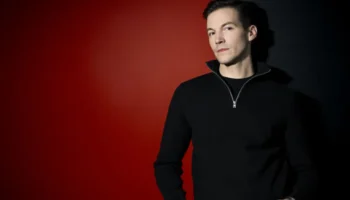The second esctoday.com TOP TEN list starts today with the places 10, 9 and 8 being announced. As announced on Saturday, this week's topic are the TOP TEN innovations that chnaged Eurovision.
Innovations in the rules and innovations in the production of the Eurovision Song Contest could qualify for the list if they changed the competition in one of the following aspects:
- The way the contest is seen by the general public
- The way the contest is seen by fans
- The popularity of the contest
- The outward appearance
- The addition of elements that helped making the contest a "cult event"
So here we start:
No. 10: Broadcast in colour (1968)
This was an innovation that was supposed to happen one day, or could you imagine the contest being broadcast in black and white these days? Nevertheless, it did change the contest back in 1968 when the first edition was broadcast in colour from the Royal Albert Hall in London, although most people at home could only watch it in black and white due to the fact that colour tv sets were very expensive at that time. On the one hand, it gave the contest a more modern appearance, but more importantly, it was one of the major impulses to bring the stage outfits more into the spotlight as you can tell by the very colourful suits most male performers were wearing in 1968 and 1969 and some even more outrageous costumes some female performers were wairing over the following years. Of course, the broadcast in colour also helped bringing the fashion spirit of the 1970s to the contest, which was one of the reasons why the contest turned from a more classy music festival to a modern pop event at that time.
A suit to remember – Gianni Mascolo in 1968:
http://www.youtube.com/watch?v=B2TvFBRAvfA
No. 9: Abolition of the orchestra (1999)
At the beginning, the Eurovision Song Contest was a fully live music event. All music was performed by an orchestra and sometimes, the singers accompanied themselves on the piano or on the guitar or they were joined by additional musicians on stage. The first entry that did not use the orchestra was probably the French entry in 1975, as the song Et bonjour à toi l'artiste only featured a piano in its arrangement. In 1979, Italian band Matia Bazar performed all the music alone on stage, being the first ones to do so. At some point in the 1980s, artists started using additional backing tracks to the live music, although the option was hardly used. In 1997 and 1998, artists were free to choose if they want to use live music or a backing track. Although only five of the 25 competing countries in the Eurovision Song Contest did not use the orchestra, it was abolished in 1999. Since then, all music has come from a backing track. Fans of the contest have often criticised that decision for various reasons. Firstly, many conductors, who had become familiar faces over the year, disappeared. Most notable here is Ireland's Noel Kelehan, who had conducted his country's entries between 1966 (the second year that Ireland took part) and 1998 (the last year the orchestra was in use) on almost every occassion. Furthermore, many performances have become sort of a charade with the lead and backing performers not actually performing the musical instruments that they present on stage. Most notably, Slovenia was represented by a strings quartet in 2009 and about 2/3 of the song were purely instrumental. Of course, there are also some advantages. Firstly, costs are heavily reduced with no orchestra. Secondly, performances by the orchestra were not always as flawless as you may think. For example, Greek singer Sophia Vossou would have probably preferred to use a backing track in 1991 if she had known what the saxophone player would be doing to her song…
Recorded music, live vocals – the Slovene entry in 2009:
No. 8: Big four rule (1999/2000)
Number eight on the list shows that a golden key can open any door. After the Eurovision Song Contest 1996, which is the only final Germany did not compete in after not making it past the semi final, the EBU began worrying what would happen if more than one of the big financial contributors had to suffer relegation one day. The solution to that problem was simple: In 1999, it was decided that the "Big four" Spain, United Kingdom, France and Germany would always qualify for the next edition, no matter their placing or average scoring of the past five years. The decision came soon enough for Spain: The country would have had to miss the Eurovision Song Contest in 2000 due to a last place in 1999 and low scorings in 1996 and 1998. In the years between 1999 and 2002, France, Germany and Spain would have all been relegated once. The United Kingdom would have been relegated after the 2003 Eurovision Song Contest, but the introduction of the semi final stage kept all countries from missing an edition. Since then, the Big four countries have always been qualified for the final. The most remarkable year was 2005, when the big four were actually the bottom four in the final finishing 24th, 23rd, 22nd and 21st. In 2006, 2007 and 2008, no Big four country reached the top ten. In 2009, it changed again with France and the United Kingdom reaching fifth and eighth place respectively. In 2010, Germany was the first Big four country to win the contest since the rule was introduced. Although the need for the Big four rule can be seen for financial reasons, it still leaves the bitter taste of unjustice and it has been heavily criticised by fans and viewers from all over Europe. It is often seen as one of the cornerstones of the competition that all countries should have equal chances – no matter how big, small, rich or poor they are.
Big four become bottom four – the voting in the Eurovision Song Contest 2005:
http://www.youtube.com/watch?v=NfIzc-4P9gs
Tomorrow, we will introduce the places 7 and 6.




